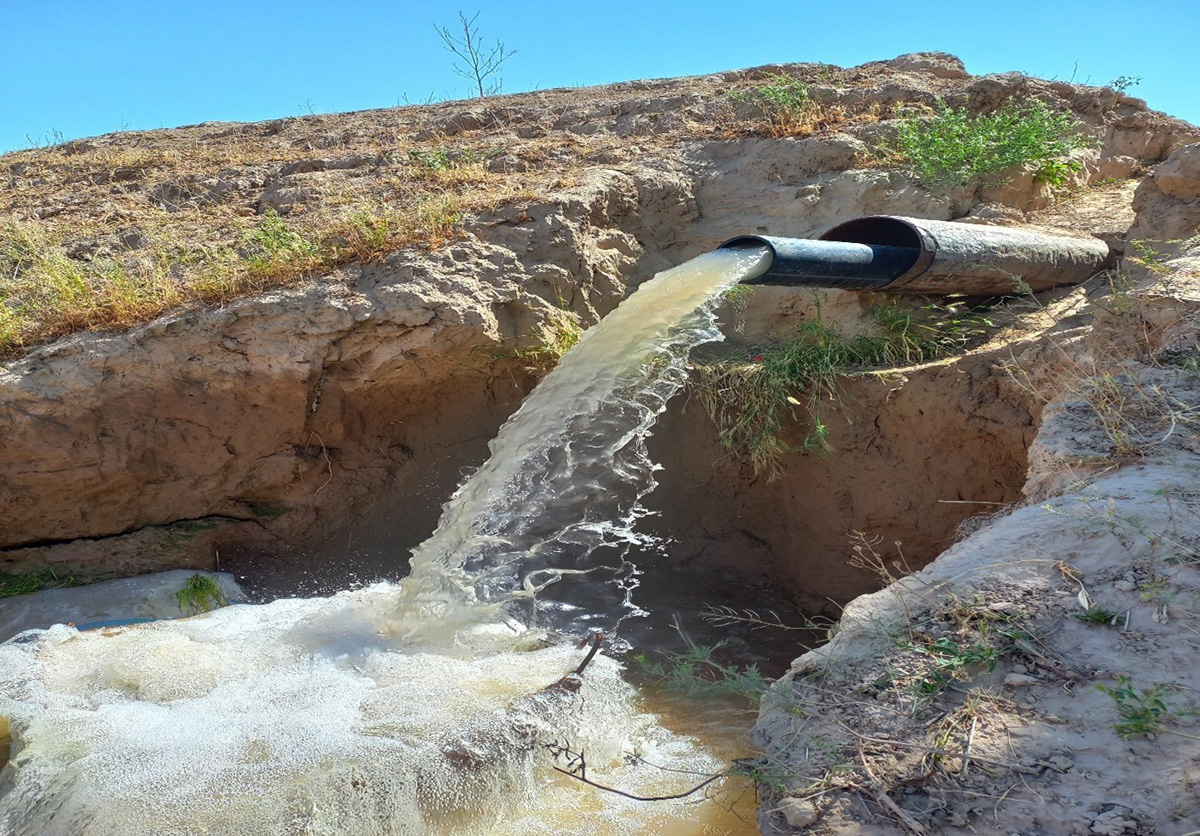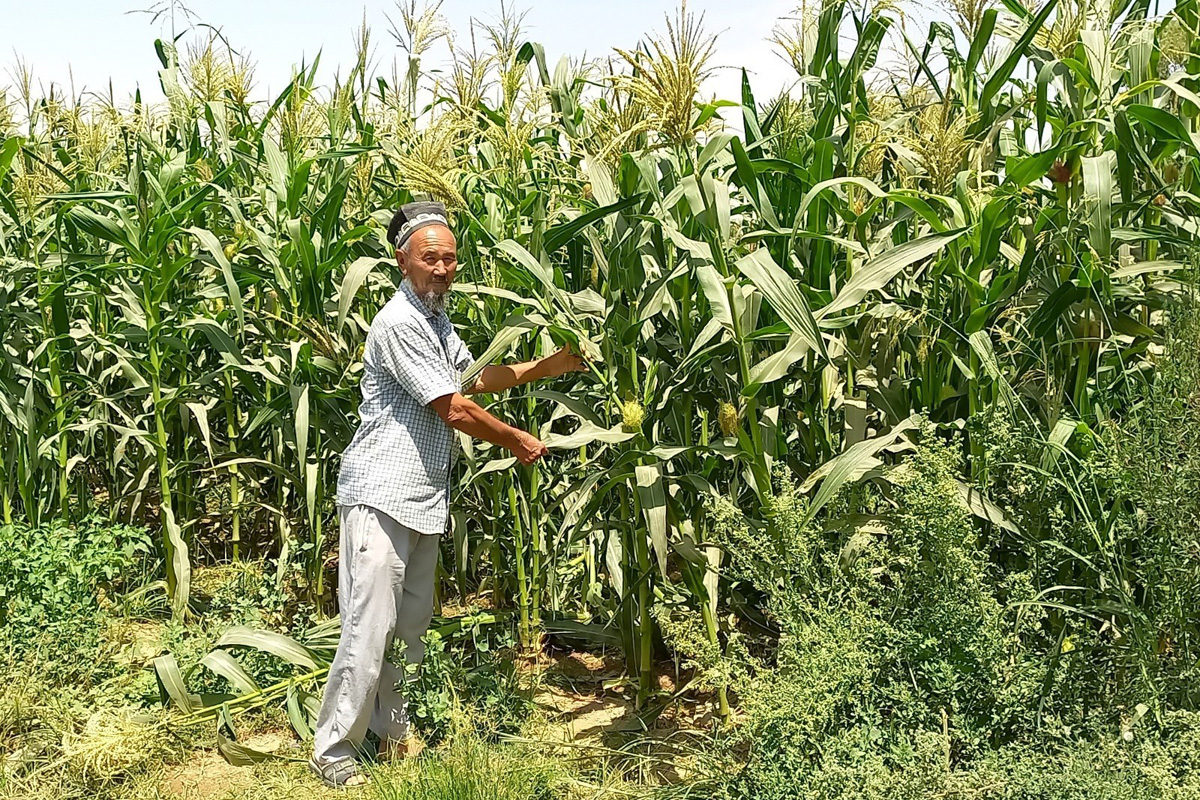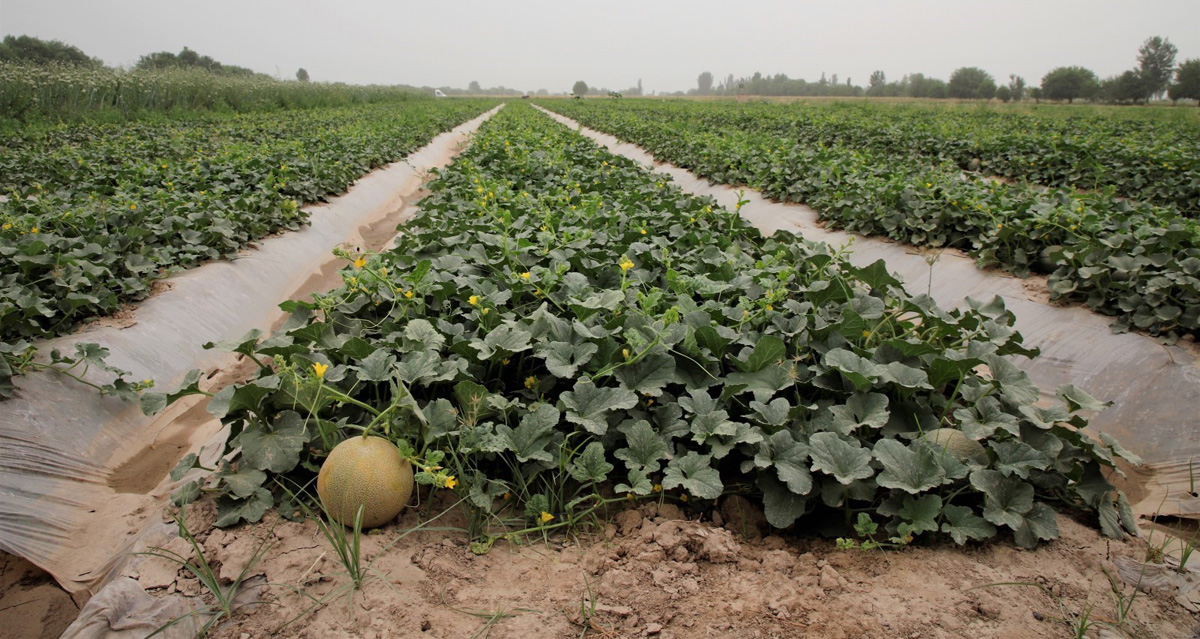A tale of two towns in Tajikistan
IFAD Asset Request Portlet
Asset Publisher
A tale of two towns in Tajikistan
The difference irrigation can make
Estimated reading time: 3 minutesIn the arid south-western borderlands of Tajikistan stand the ruined mud walls of Kuhdomani bolo. The village was once lush and green, but when the irrigation systems failed, the fields and pastures dried up. Unable to earn from their land, one by one the villagers left. Today, Kuhdomani bolo is abandoned.
Yet just beyond the lifeless fields lies another village, one whose history has taken a very different turn. This is the village of Kuhdoman, and it’s as green and lush as Kuhdomani bolo is brown and barren.
 |
| Brown and barren, Kuhdomani bolo is a ghost town with crumbling homes. ©IFAD/Didor Sadulloev |
As IFAD’s photographer takes out a camera, Ahmet Bekmatov gestures around him. “Take pictures of everything that is green, because all of it has grown thanks to the supplied water,” he says.
Looking around at his plot, it is hard to believe that only a couple of years ago, this land lay barren. Today, the wheat grows tall and the melon vines are rich with fruit. More importantly, the 0.3 hectares of cultivated land yields enough to support Ahmet, his wife and their four children.
In both Kuhdoman and Kuhdomani bolo, the pipelines and canals set up during Soviet rule used to provide a much-needed water source for this arid region. But, in recent decades, lack of financial resources, as well as fierce conflict, meant that the water supply system was no longer maintained. The soil turned to dust and the fruit trees withered.
 |
| Water flows from pipes into irrigation canals, allowing residents to cultivate. ©CASP-PMU |
Located uphill, Kuhdomani was especially vulnerable to drought. By 2008, the town ran dry and even the water for household use had to be brought in on trucks. Each family spent as much as 3,000 somoni (approximately US$300) a year on drinking water alone – equivalent to two months of the average household income.
Over the years, 50 of the village’s 300 households left Kuhdoman, and it seemed only a matter of time before the village was completely abandoned.
But in January 2020, the Community-based Agriculture Support Programme (CASP) helped the villagers of Kuhdoman turn the taps back on. Pipelines carrying water from snow-fed rivers to the east were laid and, for the first time in over a decade, people in Kuhdoman no longer had to pay huge sums for household water. They had ample water for sanitation and their livestock. What’s more, they could now cultivate their plots and bring their fields back to life.
 |
| Kuhdoman Village Organization Chairman, Achaldiev Hasan, in front of a wheat field. ©CASP-PMU |
With the return of the water supply, Ahmet’s plot is flourishing. He grows wheat and handalak, a kind of melon. He sells the fruits and harvests the wheat for use at home and to feed his livestock.
Last year, he made a profit of 31,600 somoni (approximately US$3,100). Using this income, as well as the savings from not having to purchase water, he’s building a new house. It’s Ahmet’s personal investment in the future: thanks to the water infrastructure, he and his family are here to stay.
 |
| Handalak, a local melon, growing in an irrigated field. ©IFAD/Didor Sadulloev |
For Ahmet and all of his neighbours, Kuhdomani bolo is always in sight, just beyond their cultivated fields, its crumbling homes a warning of what can happen without investment in sustainability.
“Kuhdoman would have had a similar fate if CASP hadn’t brought water to our village,” says Achaldiev Hasan, the chair of the village organization. “They also had a functioning pump station and canals, once, and their homes were very beautiful. But without water, the people lost hope and eventually left.”
But in Kuhdoman, the future seems bright. Families have started resettling in the village, and many like Ahmet Bekmatov are investing in rebuilding their homes. As Achaldiev says, “The project gave us water and brought hope and happiness back to our community. Now, we can think about a future here.”
Read more about IFAD's work with water and irrigation.
Publication date: 25 October 2022